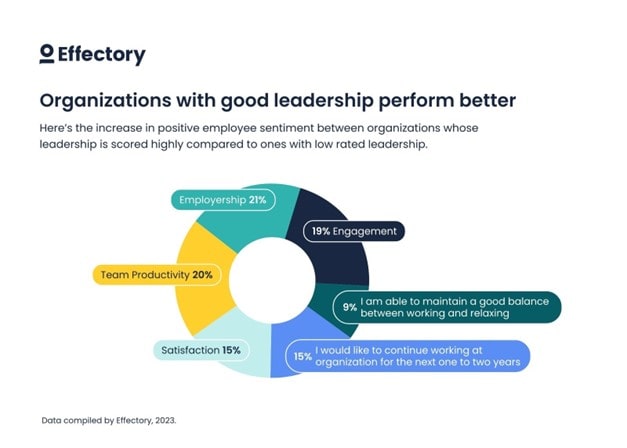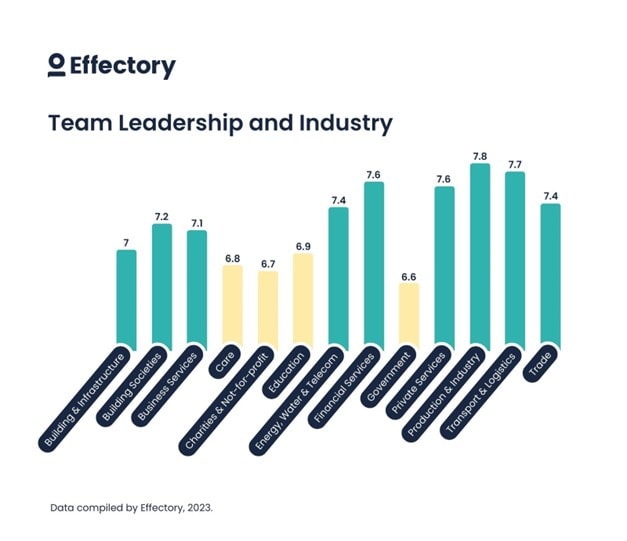In the era of remote work and distributed teams, leaders need to adapt to new ways of managing their people and organizations. This approach is often described as Hybrid leadership. In this article, we’ll explore what good hybrid leadership looks like and why it matters for modern businesses.
The Impact of Good Hybrid Leadership on Organizational Success: Key Traits of a Hybrid Leader

What is hybrid leadership?
Hybrid leadership is a management style that blends remote and in-person skills to effectively manage employees in a variety of settings.
It’s a flexible leadership approach that combines traditional and remote techniques, catering to teams that operate under a hybrid work model. Such models can be seen in offices where employees work partially from a physical workplace and partly from another workspace.
The hybrid leader must balance the needs of both types of workers and foster a cohesive, productive team culture.
Why is hybrid leadership important in today’s work environment?
One of the main advantages of hybrid leadership is that it allows managers to be more adaptable to changing circumstances.
By learning to be flexible, they can quickly adjust their leadership style to meet evolving challenges – not just today, but also in the future.
In addition, allowing employees to work from a location of their choice not only increases job satisfaction, but has also been linked to better mental health and well-being.1
Whitepaper: Hybrid working is the new normal
How are you preparing your company for the changes ahead? Tuning into the needs of your workforce will be vital to compete effectively in the post-COVID world.
DownloadDoes hybrid leadership = Good leadership?
Like any theoretical model, hybrid leadership is not a guarantee of success.
However, there are specific traits that any leader should have to be considered effective.
After 25 years of experience in employee feedback, we’ve concluded that a great leader in today’s workplace should:
- inspire
- be authentic,
- motivate,
- and create team cohesiveness.
Our construct called “Team Leadership” is based on these four traits.
With the arrival of the hybrid model and the COVID-19 pandemic, two more traits have come to the fore:
- empathy
- and creating an inclusive environment.
By combining these qualities, we can define the six primary characteristics of a good hybrid leader.
While these six traits are valuable for leaders in any work model, they become even more crucial in the context of remote work, when teams are dispersed and may need additional guidance.
If you’re already familiar with these leadership traits, you can skip ahead to our data, which demonstrates the positive impact of effective leadership. Click here to learn more.
The 6 traits of a successful hybrid leader
1. A good leader inspires
Though not always easy to quantify, there are certain traits that define an inspiring leader.
Broadly speaking, inspiring leaders know how to set goals, create a vision, and give purpose to their teams.
Two of our guest experts, Richard Sutton and Wendy van Ierschot, have weighed in on the topic and shared a few nuggets of leadership wisdom.
Sutton’s approach to building leadership skills can be broken down into a four-step plan:
- Start from within
- Set the tone
- Connect with others
- Lead your team
The plan involves managing stress, being flexible and optimistic, taking responsibility, and empowering your people.
Within this construct, an inspirational leader will need to be empathic and modest and find commonality in a world of differences.
Van Ierschot, on the other hand, emphasizes the importance of balancing between hard and soft skills.
According to her, an inspiring leader is upfront, empathic, and expresses affection and appreciation.
They believe in the collective power of the team and create a safe, yet challenging work environment.
2. A good leader acts with empathy and care
The rise of remote and hybrid work models has brought a great amount of relief and flexibility to workers worldwide.
However, every new development has a shadow side.
According to EY, good hybrid leaders must be able to show empathy towards remote team members who may face unique challenges, such as feelings of isolation or difficulty balancing work and personal life.
These leaders need to understand each team member’s individual needs and be supportive of their goals.
In this context, a focus on employee wellbeing is crucial.
Conducting pulse surveys on a team level is a great way to keep track of employee wellbeing. Pulse surveys allow you to measure your team’s sentiment in real-time and at regular intervals and to intervene when the time is right.
3. A good leader creates an inclusive work environment
Despite the growing popularity and acceptance of remote work, a recent Gartner survey revealed that 64% of managers and executives still believe that in-office employees are higher performers than remote employees, and 76% believe that in-office workers are more likely to be promoted.
For hybrid leaders, it’s crucial to ensure that their team members have equal access to promotions and development opportunities, regardless of their location.
In short: no one should be left behind.
Stay tuned for our upcoming survey products around Diversity & Inclusion. These tools will empower you to assess your current situation and identify opportunities for future improvement.
4. A good leader motivates
Motivated employees are valuable for any organization.
They not only drive the business forward but also positively impact the work environment, attitudes, customer orientation, and ultimately, organizational performance.
To know where to improve, start by assessing your team’s current level of motivation by using an employee survey.
The Effectory survey analyzes motivation based on six basic employee needs:
- Security
- Excitement
- Significance
- Connection
- Growth
- Contribution
Once you have the results, you’ll have a better understanding of where the gaps are and how you can develop a more motivated team.
5. A good leader creates a sense of togetherness
According to McKinsey, creating a sense of togetherness and building trust among employees is crucial in today’s fast-paced work environment.
To establish trust, managers need to be proactive and lead by example, demonstrating reliability, acceptance, openness, and authenticity.
Hybrid leaders who model these behaviors can foster a sense of togetherness among their teams, even in a virtual setting, which can drive greater innovation and better results.
Despite what employees may say verbally, survey results have shown that many are actually considering leaving their current job.
This discrepancy can be addressed by conducting regular pulse surveys, which offer an anonymous way for employees to provide feedback on their job satisfaction and allow managers to check in on their team’s morale.
These surveys can help identify any team members who may feel isolated or disconnected and provide an opportunity to address their concerns before they lead to higher turnover rates.
6. A good leader sets clear rules of engagement
Let’s be honest – remote work can be a mess.
Especially if teams don’t have structures in place to support each other or organize their work.
That’s why hybrid leaders must be well-organized and able to manage a team with diverse working styles and preferences.
They need to be able to prioritize tasks and delegate responsibilities effectively. And give team members a clear understanding of their roles and goals. (Source 3)(Source 4).
A good start would be to create a communication charter with your team. This’ll help set some ground rules and empower employees to self-steer within a pre-defined framework.
How HR can lead business success
HR and employee listening are crucial to business success. Here is how employee insights can help your organization.
DownloadWhy good leadership is important for organizational success
Now that we’ve figured out what makes a good leader, it’s important to know why becoming one is so important.
The short answer is simple: organizations with good leadership perform better.
The long answer involves some beautiful statistics.
Our data shows that organizations with highly rated leadership also have employees who – on average – are 19% more engaged, have a better work-life balance, and report 15% higher satisfaction with their work.

And, as experience shows, happy employees make for more productive organizations.
Employees who worked in teams with better leadership had 20% higher team productivity and were 15% more likely to continue working at their organization for the next one or two years.
That would mean less churn and higher employee retention rates – Music to any business’s ears.
Employee sentiment toward leadership by industry
Curious about how leadership is perceived in your specific industry?
Check out the graph below, which shows employee sentiment toward leadership by industry. Important to know: Scores above 7 are considered good.

Industries with highly rated leadership include financial services, production & industry, and transport & logistics, while leadership in charities, government, care, and education is rated lower.
Conclusion
Hybrid leadership is an essential skill for modern leaders who want to create a flexible, adaptable, and engaged team culture.
By combining traditional and remote leadership styles, you can tap into the unique strengths of each approach and create a more productive and innovative organization.
Whether you’re managing a hybrid team or preparing for a future of distributed work, hybrid leadership is a skill that is worth developing.
Book a free demo. See our solutions in action.
Effectory is Europe’s Leading provider of Employee Listening Solutions. Schedule a product demo and discover how to enhance your employees’ engagement.
Demo request

